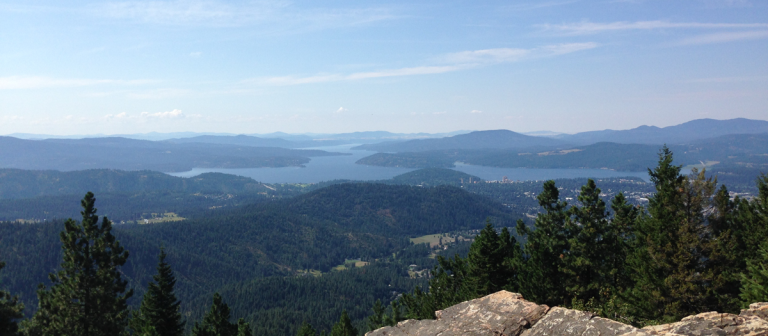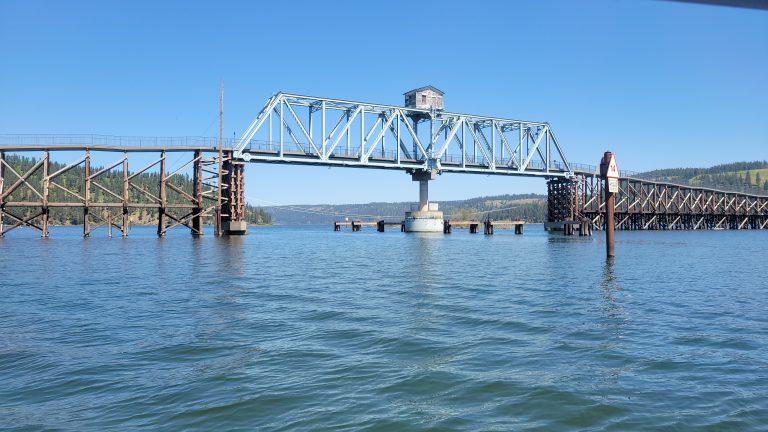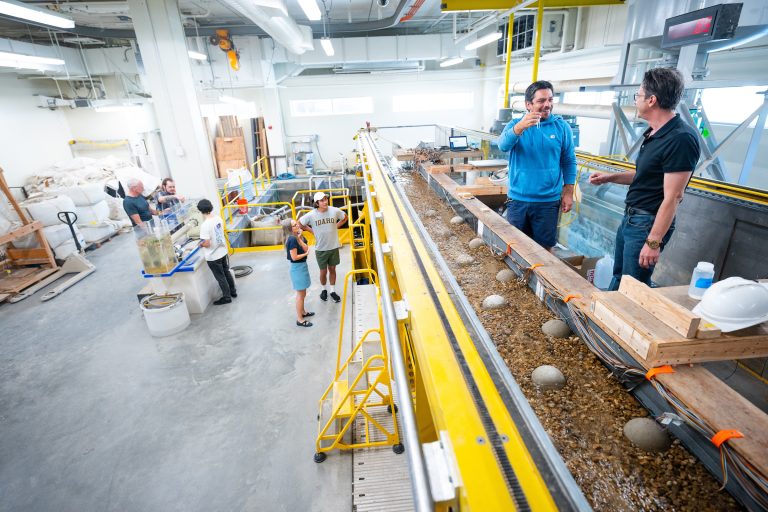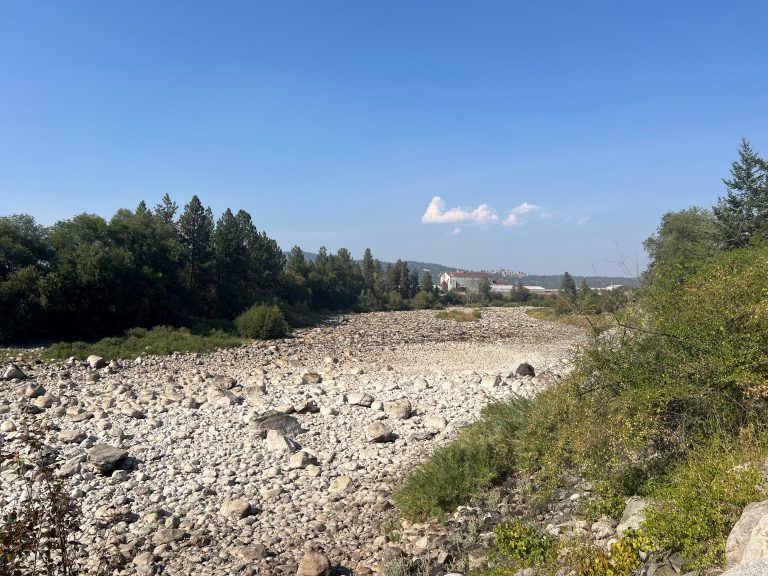By Angelo Vitale, Fisheries Division Manager
Last year, the Coeur d’Alene Tribe wrapped up construction work on one of its most ambitious projects to date and something that has been in the works for more than a decade. The Snyihms he mulshu’lmkhw (Swimmer’s Landing among the Cottonwoods) Project is located adjacent to the lower St. Joe River a few miles west of St. Maries, Idaho. During the pre-settlement era, the site was a floodplain marsh and wet meadow and was regularly inundated by overbank flows from the St. Joe River. Tribal people referred to the site as emish n(ilemn, meaning “waiting for the animal place”. The presence of culturally significant plants and numerous wildlife species supported a high level of use by the Coeur d’Alene People.
This place hasn’t looked anything like it did in the old days for quite some time. Levees were built in the late 1930s to isolate the river from the broad valley bottom to allow for farming. The native vegetation was plowed under and replaced by annual crops, including hay and oats. A major complicating factor for this change in land use was that the regulation of water at the Post Falls Dam – more than 44 miles away – made the area considerably wetter during the summer growing season, despite the presence of the man-made levee. Consequently, farmers working the area had to employ a complex system of drainage ditches and pumps to dry the site down enough to produce a crop.
Recent folklore has it that the 60-year-old levee separating the St. Joe River from the 1500-acre farm field was blown up with dynamite during the floods of 1996 to provide flooding relief to neighboring landowners. Whether this is true or not is debatable, but the aftermath had some very real consequences for natural resources on the Reservation.
For the past 26 years, the property commonly referred to as Hepton Lake, existed as a shallow, uniform expanse of open water inundated by backwater during the summer-time operation of Post Falls Dam. The water was slightly too deep to be suitable for most native plants, so the vegetation that was most important to waterfowl and other wildlife was unable to get reestablished. In addition, the shallow water provided ideal spawning habitat for non-native northern pike, an apex predator known for having an outsized impact on native trout populations.
Over a period of nearly 5 years, the Tribe developed a plan to employ creative engineering design and raise funds to reconstruct the levee with hydraulic control structures to manage water and meet multiple resource objectives while maintaining connectivity with the St. Joe River. The concept was to provide some hydraulic separation between the river and Hepton Lake to mitigate some of the negative impacts of “too much water” during the summer growing season, but also to reap the benefits that come with periodic inundation of the site by flood flows from the river, and to allow water to passively drain back to the river without the reliance on costly electric pumps.
Construction was completed during the late winter and spring of 2024. The constructed levee plug is 500-feet long by 40-feet wide at its base. The plug was constructed using an engineered mixture of aggregates and fines forming a water-tight barrier between Hepton Lake and the St. Joe River. Four three-foot diameter culverts with fish screens and backflow prevention flap gates were installed in the center of the levee to allow for adaptive water level management.

Unique and complex aspects of the project involved holding back the mighty St. Joe River in the dead of winter with a sheet pile wall while constructing on partially frozen ground to overcome site inaccessibility. As a testament to public-private partnership projects, the Coeur d’Alene Tribe self-performed a significant amount of the construction before a seamless handoff was made to a local contractor to complete the earth work. After the levee plug was installed, the Tribe revegetated the levee, took over operations of the hydraulic controls and can now apply adaptive management principles to achieve the best combination of project outcomes.
Those outcomes include support of traditional hunting and gathering practices in an area uncontaminated by the mining waste effluent that is prevalent in other parts of the Coeur d’Alene Basin, and where such cultural uses have been precluded.

This project received an Engineering Excellence Award from the American Council of Engineering Companies in Idaho to celebrate a win-win for the cultural and environmental impact of ecological restoration projects, while shining a positive light on the promise of this body of work that is championed by the Tribe. The project has expanded suitable habitat conditions for the 17 species of waterfowl that have been documented on the site – most notably tundra swans that use the area during critical spring and fall migration periods. Engineered hydraulic controls benefit many wetland plant species, including sqigwts (Sagittaria latifolia) – a high energy food that is a significant source of minerals and vitamins in the traditional Coeur d’Alene diet. Finally, the project precludes utilization of the site by northern pike, to limit this predator’s negative impact on native trout and other game fish. True to tribal traditions, this project recreates an ecosystem as close to pre-settlement conditions as possible that will be sustained for the benefit of future generations.
For updates on this project see www.restorationpartnership.org/projects/Hepton_Lake_Wetland_project.html






